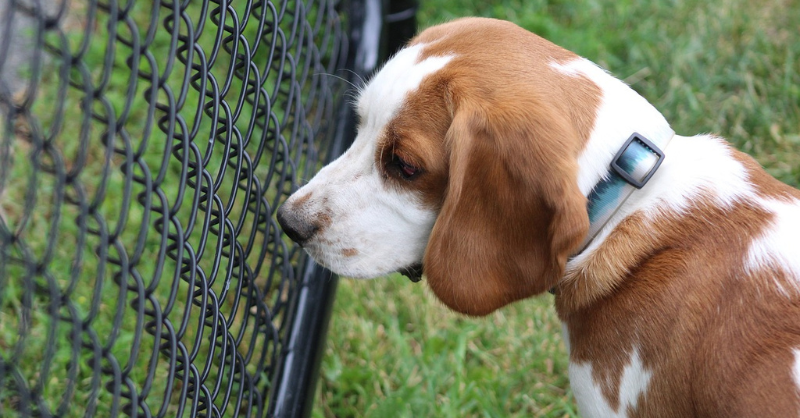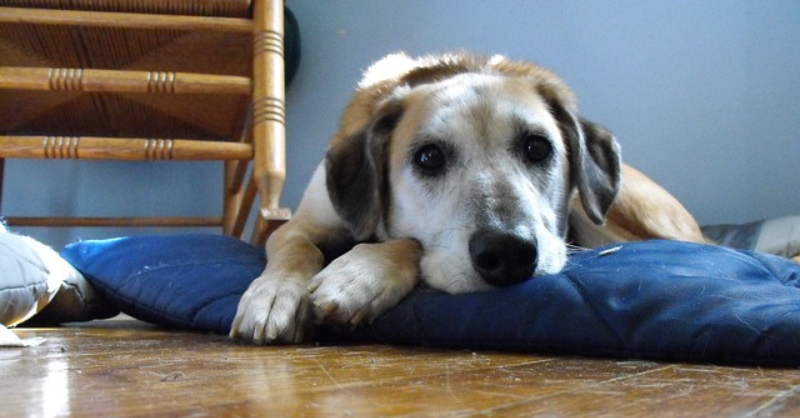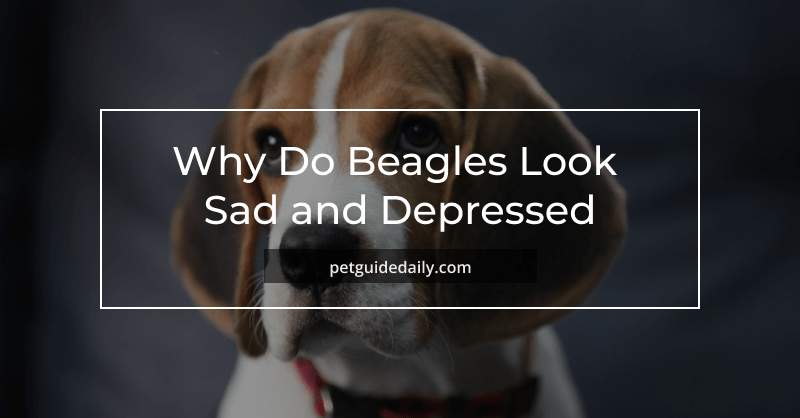Beagles are bundles of joy like any other dogs, but sometimes they encounter complications. Real beagle lovers not only enjoy their pets’ company but also can be often perplexed by their beagles’ mournful expressions. As no animal can fully express its concerns to humans, you must be on the lookout if your Beagle is facing any clinical condition.
Beagles seem depressed with their sagging cheeks, drooping ears, and drooping lips. Their drooping eyelids and gloomy eyes further add to their depressed behavior. These symptoms can occur to the happiest and healthiest beagle. That is why, although cheerful and exuberant dogs, beagles may seem melancholy due to their looks. In this post, I will discuss common beagle problems. I will also suggest if those issues should be a cause for concern for you.
Read this post till the end.
Contents
Why Does Your Beagle Look Sad?
Your Beagle often has a facial expression that may give the impression of looking sad. But they might not be sad or depressed whatever their faces represent. You will be amazed to know that their appearance does not necessarily reflect their actual emotional state. The sadness is presumed due to a combination of glances from various facial organs.
Here are a few reasons why Beagles may appear sad:
- Droopy Eyes: Beagles have large, expressive eyes with a droopy appearance. Their eyes may naturally have a downward slant, which gives them a typical sad or soulful look.
- Facial Structure: Beagles have loose facial skin around their face, which tends to create folds and wrinkles, further enhancing the impression of a sad expression.
- Floppy Ears: Beagles have long, floppy ears that hang down straight, contributing to their sad or droopy appearance. While these ears are adorable, they can add to the perception of sadness.
- Genetic Factors: Some Beagles may have specific genetic traits that make their facial features appear sadder or more pronounced. These traits can be inherited and contribute to the overall facial expression.
- Individual Variation: Each Beagle may have its unique facial features and expressions, just like humans. Some Beagles may naturally have a more somber expression, while others may have a more cheerful appearance.
How to Check If Your Beagle Is Really Sad?
Humans are not the only ones who experience depression. Other mammals, like dogs, also experience sadness and depression. Unfortunate circumstances, loneliness, and physical disease are just a few of the main things that might cause your beagle to become melancholy.
To assess if your Beagle is genuinely sad, it’s important to consider their overall behavior, body language, and any changes in their routine or environment. Here are some signs that may indicate sadness or emotional distress in Beagles:
Unexpected Behavior Change
If your joyful and energetic beagle’s behavior abruptly changes, this might be an indication of a problem. However, certain health issues, such as an upset stomach and gas, might also be the cause of his rapid mood shift.
For a few days, observe your dog’s behavior. Before concluding, look for additional indicators of sadness.
Appetite Alteration
A gloomy beagle may refuse to eat or may do adverse things like overeating in some cases. Depression in humans is much similar too as a person with depression loses their appetite. A beagle might feel the need not to feast even if it has been hungry for a long time when it is depressed.
Changed Sleeping Patterns
A depressed and frustrated beagle may start to sleep more than usual or have difficulty sleeping. A sudden shift in sleeping patterns might be an indication of sadness or sometimes a significant health problem. They become highly lethargic and start to sleep irregularly while not performing much activity when they are awake.
Inactivity
Beagles are an active breed. They are cheerful and like to play all the time. But depression might cause a beagle to become seated or inactive. it would no longer be enthralled by an activity that it had before appreciated. They might become uninterested in playing or even going for daily walks too.
Hiding
Beagles are group animals that do not perform well on their own. But if your Beagle is depressed, it may choose to be alone and the odd guy out. It may start to hide from family members. So if a beagle suddenly stops communicating with the family, this can’t be a good indication.
Excessive Vocalization
While Beagles are known for their bay or howl, excessive whimpering, whining, or prolonged periods of barking may suggest distress or unhappiness.
Avoidance of Eye Contact
Beagles are pets that love to hang around the people they love, but if your Beagle purposely avoids eye contact or seems uninterested in engaging with you or other family members, it may be an indication of their sadness or discomfort.
Changes in Grooming Habits
Beagles may neglect their grooming routine when they are feeling down or sad. You can look for signs of unkempt fur, lack of self-grooming, or a decrease in overall cleanliness.
Increased Aggression
While sadness is often associated with withdrawal or retreat, it’s possible for your Beagle to increase aggression or irritability towards people or other animals to display signs of sadness.

What Causes Beagles to Be Sad and Depressed
Several factors can cause a Beagle to feel sad or depressed. Understanding these potential reasons can help you identify and address the underlying issues.
Here are some common factors that may contribute to a Beagle’s sadness or depression:
Illness and Pain
A medical disease, illness, or body pain giving your beagle discomfort and suffering might be the source of its sadness. If you observe any signs of sadness in your dog, the first thing you should do is rule out any medical ailment. Take your beagle to the vet and get it examined.
Separation Anxiety
Beagles are known to form strong bonds with their owners, and when they are left alone for extended periods, they may experience separation anxiety. This is perhaps the strongest cause that can lead your Beagle to feelings of distress and sadness.
Changes in Routine or Environment
Beagles are creatures of habit, and sudden changes in their routine or environment can be stressful for them. This includes changes such as moving to a new home, the arrival or departure of family members or pets, or alterations in their daily scheduled walking, feeding, or playing time.
Grief
Just like humans, Beagles can experience grief and sadness due to the loss of a companion animal or a significant person in their lives. They are easily attached to the family members they live in. They are able to comprehend the absence of their loved ones. If someone leaves the home whom the Beagle likes, it may get unhappy and look gloomy.
Beagles have excellent social skills. They get along with almost every other species. Not only humans but if one of its canine companions dies or leaves the place, a beagle will be devastated. The loss of a close relative, either a human or fellow canine, is a common cause of depression in beagles.
Trauma or Fear
If the beagle has lately been through a traumatic experience, such as accidents, abuse, or other negative incidents, which can leave a lasting impact on its emotional well-being, it may become gloomy and unhappy as well. It may also have a phobia or dread of something. Various canines respond to their fear in different ways. Some dogs bark, some growl from fear while others exhibit no symptoms at all.
Lack of Mental and Physical Stimulation
Beagles are active and intelligent pets, demanding enormous mental and physical exercise to stay happy and engaged. If they lack opportunities for play, exercise, and mental stimulation, they can become bored and unhappy.
Lack of Socialization
Beagles are social dogs, and they need sufficient socialization with other dogs or humans. Poor interaction with other living creatures can make them feel isolated and lonely.
Lack of Attention and Affection
Beagles are cheerful animals. They thrive on love, attention, and positive interactions with their owners. If they feel neglected or lack sufficient affection, it can lead to feelings of sadness or depression.

How to Make Your Beagle Happy?
To make your Beagle happy, you can do several things to give them a fulfilling and enjoyable life. Here are some easy tips to make them lively:
- Regular Exercise: Remember that Beagles are an active breed. They need regular exercise to keep them physically and mentally stimulated. Don’t avoid their daily walks, take them out two times every day. Besides, engage in their playtime and let them run and explore in a safe and secure environment.
- Mental Stimulation: Beagles are intelligent animals and thrive on mental challenges. They love to play with puzzle toys and interactive games. Besides, provide them with training sessions to keep their minds engaged and prevent boredom.
- Socialization from Early Ages: Beagles are social animals too. They enjoy the company of humans and other pets, especially any other dogs in your home or neighboring dogs. You must socialize them from an early age by introducing them to different people, animals, and environments. To do that arrange playdates or visits to dog parks to provide them with opportunities for positive social interactions.
- Positive Reinforcement Training: Positive reinforcement techniques, such as rewards and treats always work on Beagles, especially to train them. Reward them with their favorite foods. This will not only help in teaching them commands and good behavior but will also strengthen the bond between you and your dog.
- Quality Time and Affection: Beagles are known for their devoted and caring nature. You should spend quality time with your Beagle, giving them attention especially if they are really sad. Rub their belly and gently cuddle. Whenever you are with them, express your love and appreciation for them. Do it regularly to keep them relaxed.
- Comfortable Environment: Ensure your Beagle has a comfortable and secure designated living space at home. They must feel the environment relaxed else they might feel depressed. Ensure they have a cozy bed, fresh water, and a balanced diet. These are the main elements. Also, you must keep their living area clean, and free from hazards.
- No Separation for Long Periods: Beagles are easily prone to experience separation anxiety when left alone for long durations. If you need to be out of the home for a long period, try to arrange for someone to check in on your Beagle. If possible, it’s better to hire a pet sitter. You can also consider doggy daycare to minimize their lonely time.
- Veterinary Care: Don’t miss regular check-ups with a veterinarian to monitor your Beagle’s health. Besides, if you see your Beagle behaving unnaturally, check with fellow owners or better to meet the vet. It’s always better to address any concerns promptly. You must ensure their health card is up-to-date on vaccinations.
- Tracking Games: Beagles have a strong sense of smell, and engaging them in scent work or tracking games taps into their natural instincts and provides mental stimulation. Hide treats or toys for them to find or consider participating in activities like nose work or tracking trials.
- Patience and Understanding: Every Beagle is unique and may have its own preferences and personality traits. So, be patient, understanding, and attentive to their needs. By developing a strong bond based on trust and positive reinforcement, you can overcome any sadness, or depression in your Beagle. That bond will make you happy too.
Is Sadness in Your Beagle a Matter of Medical Concern?
Yes, if you see signs of prolonged sadness or depression in your Beagle, you should consider it as a matter of medical concern. Remember that occasional or light fluctuations in your Beagle’s mood can be normal, but continuous, freequent or intense sadness may indicate an underlying health issue or a deep emotional distress. Some factors you need to pay attention:
- Duration and Severity: If you find Beagle’s sadness lasts for weeks or months, or if it seems to be severe and seriously impacts their daily behaviors, you should consult a veterinarian.
- Behavioral Change: If your Beagle shows significant changes in its appetite, weight loss, excessive lethargy, withdrawal from activities or interactions, or other abnormal behaviors, it may indicate an underlying medical condition.
- Physical Symptoms: Observe from time to time any physical symptoms, such as vomiting, diarrhea, excessive panting, coughing, or limping. Changes in urination or bowel movements can be a matter of concern too. All these symptoms combinedly or only one of them may suggest an underlying medical issue contributing to their sadness.
- Trauma or Loss: If your Beagle has experienced a traumatic event like abuse or accident or the loss of a fellow animal or a family member, their sadness may be a normal reaction to their grief. It can typically last a few hours or a few days. However, if it persists for weeks or increases over time, professional guidance becomes a requirement.
- Assessment by Veterinarians: Consult your veterinarian to conduct a thorough physical examination. The vets can assess Beagle’s overall health by conducting necessary diagnostic tests and can find out any medical conditions contributing to their sadness.
- Professional Consultation: Apart from veterinarians, in some cases, a professional dog behaviorist can help evaluate your Beagle’s behavior. This is especially helpful when your Beagle’s sadness comes from grief or loss. The veterinary behaviorist can provide proper guidance and develop a tailored plan to address their emotional well-being.
What types of events can be traumatic for your Beagles
Like any other dog breed, Beagles can be affected by traumatic and hurtful events, resulting in their sadness or distress. Not all dogs react to the same event equally. However, some traumatic events are common to affect a Beagle’s emotional well-being.
- Abuse or Neglect: Beagles that have experienced physical or emotional abuse in their past may carry the emotional scars of these traumatic experiences. Such mistreatment can lead to fear, anxiety, and sadness from time to time whenever they face the same incident. Not only abuse, but negligence also can leave a lasting emotional wound.
- Sudden Separation: Beagles naturally form strong bonds with their human family members and other animals. A sudden separation or loss of a beloved owner, another family member, or a fellow companion can be emotionally traumatic and lead to grief and sadness.
- Bad Accidents and Injuries: Beagles that had an accident, sustained injuries, or underwent painful medical procedures may develop a fear or association with those events, resulting in growing sadness or anxiety.
- Loud Noises: Beagles can be fearful of loud noises such as thunderstorms, fireworks, or other sudden and overwhelming sounds. Experiencing natural disasters or living in environments with continuous loud noises can cause stress and sadness, sometimes it may be permanent.
- Change in Environment: Beagles are creatures of habit, and significant changes in their living environment, such as moving to a new home or being rehomed, can make them nervous and cause feelings of stress or sadness.
- Isolation: Beagles are social animals and thrive on interaction with humans and other dogs. Prolonged isolation from its owner that they haven’t experienced earlier can lead to feelings of loneliness, resulting in sadness.
- Experiencing Violence: Like any other house dog, Beagles are cheerful but experiencing or witnessing a violent incident or aggressive behavior, can be shocking for them, leading to emotional distress.
Final thoughts
Your Beagle’s appearance alone is not a reliable indicator of its emotional state. While they may look sad, Beagles can be happy, energetic, and playful dogs, and they really are. Their overall well-being and emotional state should be assessed based on a combination of factors, including body language, behavior, and overall health.
